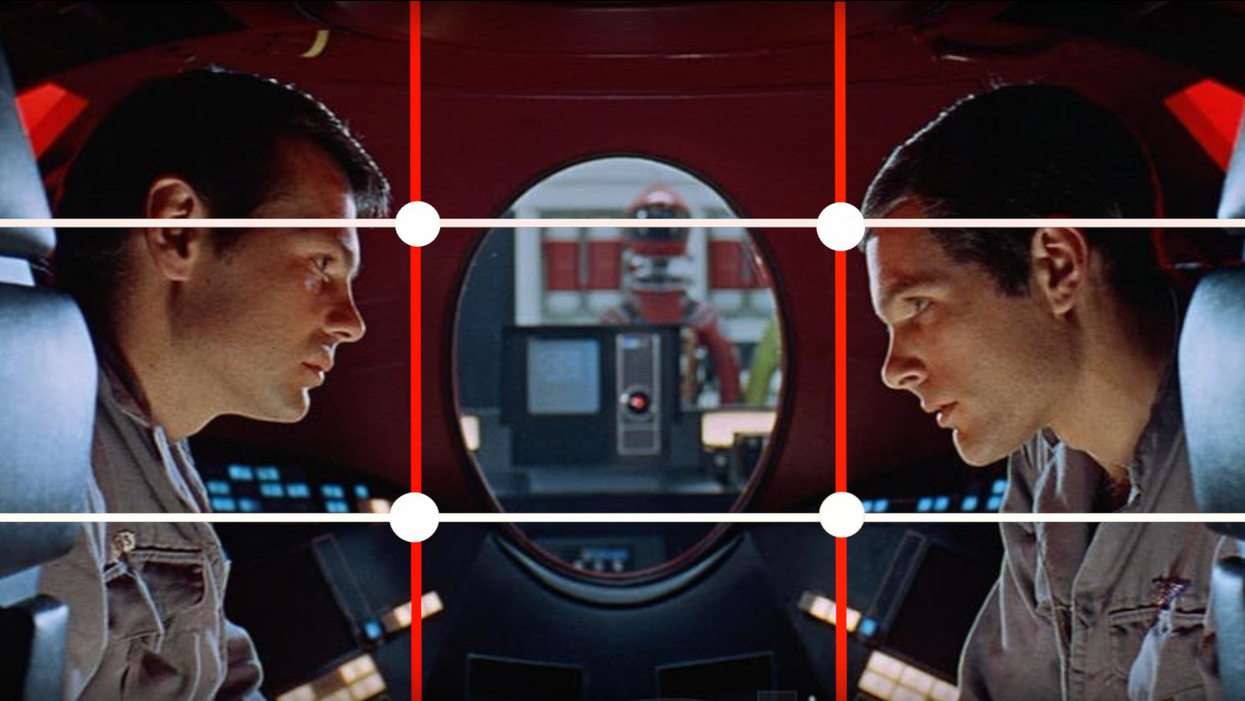How to Give Characters Power Through Composition
The Rule of Thirds is a great tool you can use to establish dominance on-screen.

Most of you, whether you're a beginner filmmaker or a seasoned pro, knows about the Rule of Thirds. But if you don't, it's basically a compositional guide that trisects the frame vertically and horizontally, dividing sections into smaller parts and creating intersections that will help you compose balanced and aesthetically pleasing images.
But the Rule of Thirds does more than balance elements— it also establishes dominance.
To understand what I mean by that, check out this video from John Tindell, in which he breaks down the basics of the Rule of Thirds and explains how some of the greatest filmmakers in history used it to depict iconic power struggles in their movies.
As you can see from the video, a lot of power and importance is given to subjects that appear in different parts of the frame, primarily the foreground and at the intersections. There are several possible reasons why.
Power in Placement
Where you decide to place your subject will determine how much power and importance it receives.
Foreground
Placing your subject in the foreground not only brings them closer to the audience but also puts them "first in line" in the order in which people view images. Assuming everything is in focus, we tend to look at the closer elements in the foreground first and then move back to the middle and background. Being "first in line" gives them power.
Center Framing
The center of the frame is prime real estate when it comes to aesthetic energy. The balance that it produces guides viewers' eyes directly toward it and offers it more authority than elements on the sides of the frame.
Top Two Intersections
Imagine placing two subjects in the frame: one at one of the top two intersections and one at the bottom two intersections. Which one would you say had more "power"? Probably the one at the top, right? Being "on top" is a place of power and authority.

Power in Size
According to leading theories of aesthetics, larger images produce greater amounts of aesthetic energy, often making them the first things you see when you look at an image. Since objects in the foreground are more often than not the largest in the frame, it stands to reason that placing your subject in the foreground would make it the first and most looked-at object in the frame.
So, being "big" not only gives it power symbolically but also aesthetically.

Size Isn't the Only Thing That Matters
Keep in mind that there are many other factors at play that could overrule the compositional concepts I just talked about. For example, you may place your subject in the foreground and make it the largest object in the frame, but if everything in the frame is grey while one small object in the background is bright red, your audience's eye will be drawn to that tiny red object before everything else. This is known as "contrast".

The science behind cinematic composition is fascinating. Elements like color, subject size, negative space, leading lines, and many others communicate a myriad of things to audiences, and it's our job as filmmakers to know what those messages are and then deliver them visually.
If you want to learn more, check out our articles on composition and aesthetic theory.
Source: John Tindell











